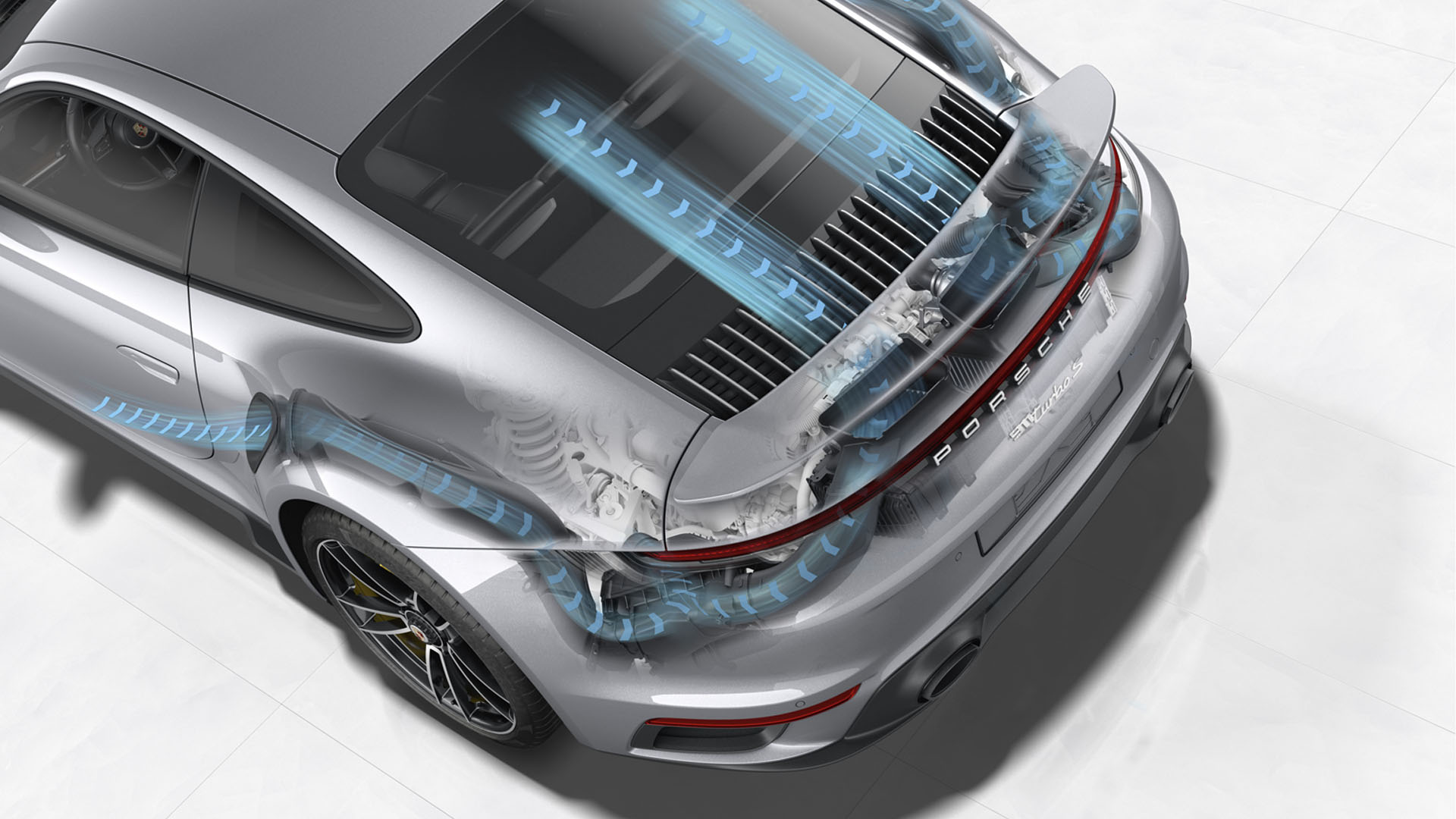

It is fascinating how various hybrid vehicles manage the relationship between their batteries, motors, and internal combustion engines. It’s a tricky problem, and sometimes the solutions are extremely interesting even if their true effectiveness is open to question. In a patent published in late May, Porsche lays out an interesting way to address the issue of battery cooling. The solution it comes to, however, is a little unorthodox.
In a nutshell, Porsche wants to cool a hybrid car’s batteries using pressurized air from the engine’s turbocharger, preferably an electric one. The automaker details a layout where the battery, or perhaps even individual battery cells, are placed in the engine’s intake tract to achieve this. That way, the boosted air provides additional pressure to the intake side of the engine and pulls heat from the battery. The document notes that the air might be “heated somewhat” in this process, although it doesn’t really address the issue beyond that.
The idea is laid out in a patent application titled “VEHICLE HAVING A HYBRID DRIVE,” which goes into detail on why and how Porsche might wanna do this. It’s primarily an effort to save weight and complexity, or so the automaker claims. The entire system is not as simple as just flowing air over some batteries, though.
The important thing to know about the system is the basic layout of all the components. I don’t usually go through the arduous process of labeling all of the parts in an automaker’s engineering diagrams, but it’s pretty necessary here. (Of course, Porsche brought me to this.)

The outside air is first compressed, either by a conventional turbocharger or an electric supercharger. It then encounters an auxiliary booster. This is described as a “blower, pump, compressor or the like,” and it’s there, as I understand it, to provide cooling air for the battery at low engine speeds if the system utilizes a conventional turbocharger. In other words, if the battery is still hot but there’s not enough airflow from the turbo to cool it, it kicks on to provide some more airflow. If the system uses an electric compressor instead of a regular turbo, this may not be included.
The charge air then travels through an intercooler before encountering a heating element. This would be used to heat intake air on a cold day in order to condition the batteries. After it goes through this, we finally get to the battery…where we encounter a bypass valve. Basically, if the battery—a small pack or perhaps even individual cells to increase surface area—doesn’t need to be cooled, Porsche thinks it would make sense just to bypass it and go straight to the engine. This valve is also sort of like a thermostat; it could be used to maintain an ideal battery temperature by being open/closed.
After all of this, we get to the engine, where we encounter…bypass valve #2. This one is for when you only want to vent battery heat out of the car and not into the vehicle’s intake. This valve might be utilized in off-throttle situations, or perhaps when the vehicle is stationary. The patent indicates this heat can either be vented straight into the atmosphere or perhaps into the exhaust system.
The Stuttgart automaker says this is all to save weight and complexity, but it seems like a lot. Yes, a fluid-handling cooling loop might be a little heavier, but it would likely be less complex. Likewise, placing the battery outside of the intake tract would probably necessitate the addition of another blower to air-cool the battery, but it would also be simpler. What Porsche is doing here is basically attempting to augment parts it already has in a car to realize an effective battery cooling solution to questionable effect.
It might be more effort than it’s worth, but who knows. Maybe when the hybrid 911 comes around, it will feature intake-mounted batteries. It’s an odd solution for sure, but if it works, it works. It certainly wouldn’t be the most unorthodox thing a German automaker has engineered in the past.
Email the author at peter@thedrive.com